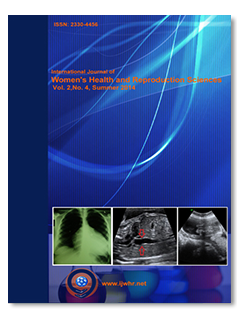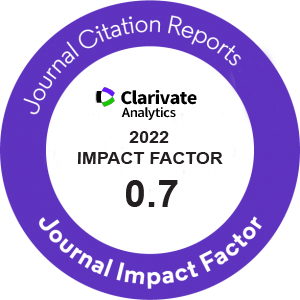
| Original Article | |
| Mothers' Lifestyle Characteristics Impact on Her Neonates' Low Birth Weight | |
| Rabindra Nath Das1, Rajkumari Sanatombi Devi2, Jinseog Kim3 | |
| 1Department of Statistics, The University of Burdwan, Burdwan, West Bengal, India 2Statistics and Epidemiology Cell, Department of Community Medicine, Sikkim Manipal Institute of Medical Sciences, Gangtok, India 3Department of Statistics and Information Science, Dongguk University, Gyeongju, South Korea |
|
|
IJWHR 2014; 2: 229–235 DOI: 10.15296/ijwhr.2014.33 Viewed : 6119 times Downloaded : 6998 times. Keywords : Ethnic Groups, Joint Generalized, Linear Log-normal Models, Lifestyle Characteristics, Low Birth Weight, Premature Labor, Uterine Irritability, Last Menstrual Period Regularity |
|
| Full Text(PDF) | Related Articles | |
| Abstract | |
Objective: Epidemiological research often seeks to identify a causal relationship between the risk factors and the disease. Earlier researches suggest that mother age, her weight at last menstrual period, race, the number of physician visit during the first trimester of pregnancy, may affect on her neonate birth weight. Mechanisms of mother lifestyle characteristics on her neonate weight are intricately complicated. These mechanisms, however, can be easily interpreted through an appropriate mathematical relationship. The present study aims to identify the factors of mother's lifestyle characteristics which have statistical significant effects on her neonate birth weight based on statistical (or probabilistic) modeling. Materials and Methods: The present study is based on the secondary data collected at Baystate Medical Center, Springfield, Massachusetts during 1986. It was a routine data set. There was not any specific setting. Study subjects were 189 mothers, 59 of which had low birth weight babies and 130 of which had normal birth weight babies. Joint generalized linear log-normal statistical modeling of mean and variance is used. Results: The present analysis identifies that mother age (p= 0.063), her weight at last menstrual period (p= 0.019), race (p= 0.017, p= 022), smoking status (p= 0.014), history of premature labor (p= 0.008), history of hypertension (p= 0.031, 0.039) and presence of uterine irritability (p= 0.002) are statistically significant on her neonate birth weight. It has been detected that the variance of neonatal birth weight is non-constant, which invites the present study. Conclusion: Impacts of mother's lifestyle characteristics on her neonate weight are explained based on mathematical relationships. This analysis supports many earlier research findings. However, the present analysis also has identified many additional casual factors that have explained the mean and variance of neonatal birth weight, which was not reported by the earlier investigators. In addition, some conflicts about the earlier research findings are attempted to be removed. |
Cite By, Google Scholar
Online Submission System
 IJWHR ENDNOTE ® Style
IJWHR ENDNOTE ® Style
 Tutorials
Tutorials
 Publication Charge
Women's Reproductive Health Research Center
About Journal
Publication Charge
Women's Reproductive Health Research Center
About Journal
Aras Part Medical International Press Editor-in-Chief
Arash Khaki
Mertihan Kurdoglu Deputy Editor
Zafer Akan





















